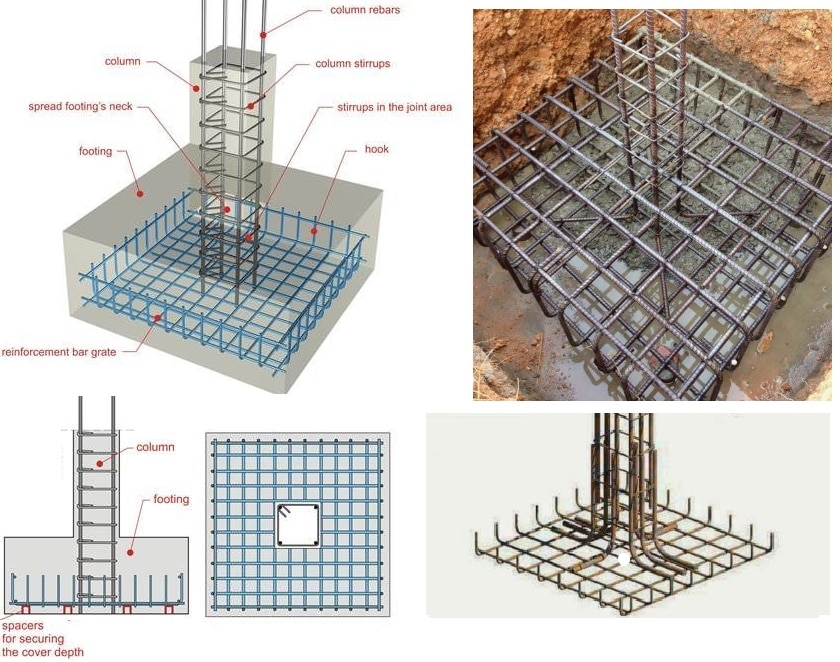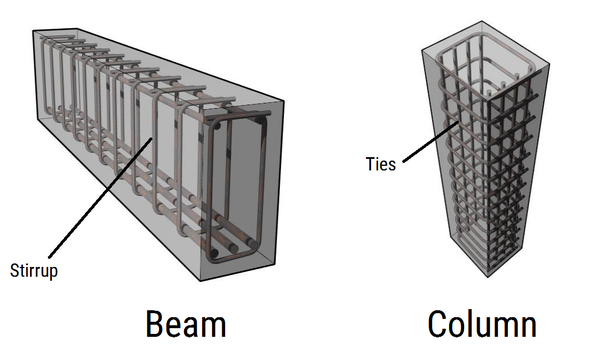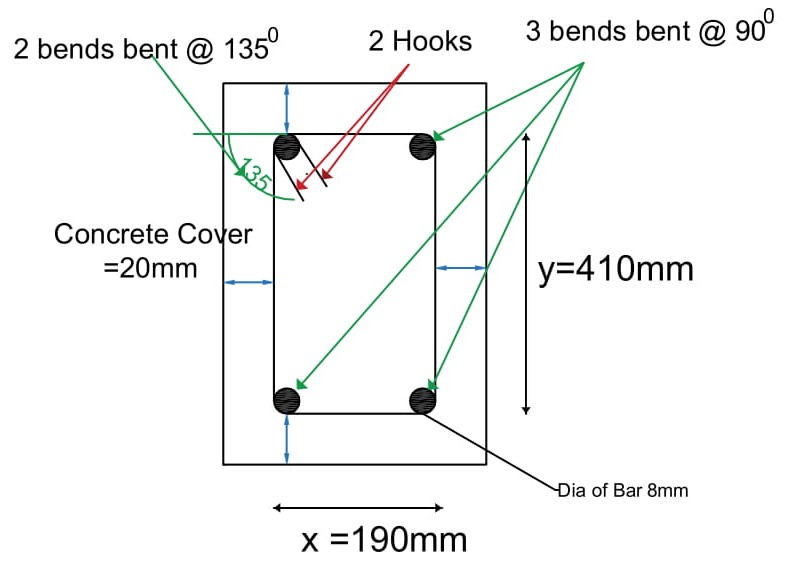Reinforcement Work: Rebars, Concrete Cover, Stirrups, Dowel Bars,Distribution Bar
Terms Used in Reinforcement Work: Rebar, Concrete Cover, Stirrups, Dowel Bars, Distribution Bar
Rebars
Reinforcing steel bars are also called rebar. It can be metal bars or wires that are mixed in concrete to act together to resist forces.
When used together, it strengthens the concrete and improves the mechanical performance on forms reinforced concrete structure.
Steel on concrete has a nearly equal thermal expansion coefficient, and when used together during expansion, it does not produce additional stresses
The tensile strength of concrete is 5 to 7% of its compressive strength, which is very poor. To increase the tensile strength of concrete members so that they can resist tension, steel bars are used.
Steel strengthens the concrete and improves the mechanical performance of the structure.
The reinforcement steel is a form of carbon steel in which the iron mixed with small portions of carbon shows the chemical composition of rebar. It has 99% time and small traces of other elements.
The main advantages of rebar are its ability to bend. It is also tough and readily available. It can be recycled and stretches under loading.
Concrete Cover
The least distance between reinforcement and concrete surfaces known as concrete cover. The purpose of providing cover is to protect the reinforcement from corrosion, environment, Thermal insulation from wearing temperature on fire.
The standard specifications for providing cover are as follows.
- For the reinforcement concrete slab, it should be greater than 25 millimeters or the diameter of reinforcement.
- For beam that is greater than 25 millimeters or the diameter of reinforcement
- For the column, It is 40 millimeters.
- For lintel, whether shared or canopy, 15 millimeters.
- For column and wall footing, 50 millimeters
Chairs
Chairs are metal supports for reinforcement to maintains proper positioning of rebar during concrete placement. A certain height is to be maintained from the bottom surface. The maximum spacing of the chair is 1 m or can be less as per requirements.
Spacers
Space is also known as concrete cover blocks, are used to maintain reinforcement in the proper position.
Splice
The method used to join the reinforcement bars so that the forces transferred effectively from one bar to another.
It is achieved in different ways, such as lapping welding or coupling.
Lap length.
Lap length is the minimum length that must be provided if two bars are joined together for the forces to be transferred.
It mainly depends on the
- Concrete strength
- Type of concrete
- The yield strength of the bar.
Common lap length used are
- For slap, it is 50d
- For beam and column 40 d if it is tension zone on 24 d if it is in the compression zone.
When two different diameters of bars have to be left, the lap length should be calculated based on the smaller bar’s diameter.
Coupler
Couplers are used to join two rebar without providing lapping. It avoids honeycombing. Ensure lapping or use of couplers are staggered.
Development Length
It is a minimum embedment length to transfer the bar force to surrounding concrete through the bond. The formula to calculate development length is 50 70 for M 20 40 90 for M 25 on 45 d for M 30 shown is development length, L D of a footing.
Bar Spacing
Bar spacing is the clear distance between different rebar. It cannot be less than one inch and should at least be equal to the bar’s diameter.
Pitch
This is the gap between deformations on rebar. It is centered to center spacing between turns of a spiral.
Stirrups
Stirrups are used to resist lateral shear, stress, and diagonal tension stress in reinforcement cement concrete structure; thus, stirrups help to prevent buckling failure in columns.
Depending upon the nature of construction, different types of stirrups used in beams and columns are listed below.
- Single leg stirrups.
- Two-legged or double leg stirrups.
- Four legs stirrups.
- Six-leg stirrups.
Hooks
Hooks are the bend provided at the edge of the stirrups. It helps for better bonding.
Distribution Bar
These are thinner bars placed at right angles to the main steel. It helps prevent cracking on load distribution.
Dowel Bars
Dowel bars are short bars used to increase strength at construction joints.




